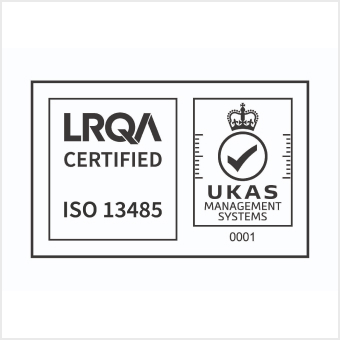Determining Permanent Effect of Heat on Plastics
Part 1: Introduction to Heat Effects on Plastics
- What is Heat Aging and its Importance in Plastics Testing?
- Definition of heat aging and its significance in material performance
- Key concepts in heat resistance and thermal degradation of plastics
- Overview of the role of heat testing in product design and manufacturing
- Heat aging vs. environmental aging
- Why Understanding Permanent Effects of Heat on Plastics Matters
- Long-term performance predictions for materials exposed to high temperatures
- The impact on the service life, safety, and reliability of plastic products
- Economic considerations: Testing for quality assurance, performance consistency, and cost-efficiency
- Safety concerns: Risk of failure due to thermal degradation (e.g., automotive, aerospace, medical applications)
Part 2: Heat Aging Mechanisms in Plastics
- Thermal Degradation and Its Causes
- Understanding the fundamental processes of thermal degradation: Oxidation, crosslinking, chain scission, etc.
- The effect of temperature on molecular structure: Changes in crystallinity, melting point, and molecular weight
- Chemical degradation pathways under heat: Reactions with oxygen, moisture, and other environmental factors
- The role of stabilizers, antioxidants, and additives in delaying thermal degradation
- Types of Heat Effects on Plastics
- Softening and melting of thermoplastic materials
- Hardening and embrittlement of thermoset plastics
- Loss of mechanical strength, flexibility, and impact resistance
- Color change, discoloration, and surface degradation
- Changes in electrical, thermal, and chemical properties
- Factors Affecting Heat Resistance in Plastics
- Polymer type: Differences between thermoplastics, thermosets, and elastomers
- Molecular weight, additives, fillers, and plasticizers
- The role of additives in heat resistance: Flame retardants, UV stabilizers, etc.
- Environmental factors: Humidity, oxygen levels, and exposure to UV radiation
Part 3: Methods of Determining Permanent Heat Effects on Plastics
- Heat Aging Testing Protocols
- Overview of ASTM, ISO, and other standards for heat aging testing
- ASTM D573: Heat aging of rubber and plastics
- ASTM D3241: Determination of the effect of heat on plastics using accelerated conditions
- ISO 188: Accelerated aging tests for elastomers and plastics
- Test chambers and environments: Temperature, duration, and humidity control
- Temperature and Time Parameters in Heat Aging Tests
- Determining the optimal temperature for accelerated aging
- The effect of aging time on material properties
- Statistical considerations in test design: How to choose the proper test duration and temperature
- The relationship between accelerated test conditions and real-world conditions (e.g., use in automotive, electronics, etc.)
- Methods for Evaluating Permanent Changes in Plastics After Heat Exposure
- Physical property testing: Tensile strength, elongation, hardness, and impact resistance
- Chemical analysis: Fourier-transform infrared spectroscopy (FTIR), thermogravimetric analysis (TGA), and differential scanning calorimetry (DSC)
- Surface degradation analysis: Surface roughness, discoloration, and crack formation
- Microscopic analysis: Scanning electron microscopy (SEM), atomic force microscopy (AFM), and optical microscopy
Part 4: Heat Effects on Different Types of Plastics
- Thermoplastics
- Types of thermoplastics (e.g., polyethylene, polypropylene, polystyrene, polycarbonate)
- Heat aging effects on thermoplastic properties: Softening, creep, dimensional stability, and thermal degradation
- Applications affected by heat aging in thermoplastics (e.g., automotive parts, packaging, electrical components)
- Thermoset Plastics
- Types of thermosets (e.g., epoxy resins, phenolic, melamine)
- Effects of heat on thermoset polymers: Crosslinking, embrittlement, and irreversible structural changes
- Applications of thermosets affected by heat aging (e.g., automotive parts, electrical insulators, adhesives)
- Elastomers and Rubbers
- Types of elastomers (e.g., natural rubber, silicone rubber, EPDM)
- Heat-induced degradation in elastomers: Hardening, cracking, and loss of elasticity
- Aging behavior of elastomers in automotive and industrial applications (e.g., seals, gaskets, and hoses)
- Polymer Blends and Composites
- Behavior of polymer blends under heat exposure
- Heat resistance in fiber-reinforced composites and hybrid materials
- Challenges in predicting the heat aging behavior of complex materials
- Case studies of heat aging in automotive and aerospace composite materials
Part 5: Testing Standards and Methods for Heat Aging
- Global Standards for Heat Aging Testing
- ASTM D573: Heat aging of rubber and thermoplastic materials
- ISO 188: Methods for heat aging testing of rubber and plastics
- ISO 2039: Heat resistance tests for thermoplastics and thermosets
- UL 94: Flammability and heat resistance testing
- DIN 53508: Heat aging of rubbers and elastomers
- Interpretation of Heat Aging Test Results
- Standard methods for analyzing changes in mechanical properties: Stress-strain curves, hardness testing, etc.
- How to evaluate chemical changes post-aging: Infrared spectra, thermal analysis, and molecular weight measurements
- Determining the service life prediction from accelerated heat aging results
- Dealing with variability in test results and ensuring reproducibility
- Accelerated Aging vs. Real-World Heat Exposure
- Understanding the correlation between accelerated aging tests and actual product usage
- The role of statistical modeling and predictions in determining real-world performance
- Limitations of accelerated aging tests and their applications in different industries
Part 6: Applications of Heat Aging Testing in Industry
- Automotive Industry
- Heat aging testing for automotive plastics: Interior and exterior components, under-the-hood parts
- Impact on material selection for long-term performance and safety
- Case studies of failures in heat-aged automotive components
- Electronics Industry
- Heat resistance in plastic components for electronics: Connectors, casings, insulation materials
- Testing for long-term durability and reliability under operating conditions
- Impact of heat aging on electrical properties of plastics
- Aerospace Industry
- Heat aging testing for aerospace components made from plastics and composites
- Predicting material behavior in extreme temperatures and flight conditions
- Case studies of material degradation in aerospace applications due to heat aging
- Medical Devices and Healthcare
- Impact of heat on medical plastics: Prosthetics, medical equipment, and packaging
- Regulatory standards for heat resistance in medical device manufacturing
- Challenges in ensuring the long-term safety and efficacy of medical plastics under heat exposure
- Packaging and Consumer Goods
- Heat aging effects on plastic packaging: Food and beverage containers, medical packaging, and consumer products
- Importance of heat resistance in packaging materials for food safety and preservation
- Design considerations for ensuring the longevity of plastic packaging
Part 7: Advanced Topics and Future Directions
- Emerging Materials and Their Heat Resistance
- Innovations in heat-resistant polymers: High-performance thermoplastics, polyimides, and high-temperature elastomers
- Nanocomposites and their heat resistance: Enhancing thermal stability with nanoparticles
- Biodegradable plastics and their heat aging behavior
- Future Trends in Heat Aging Testing
- The role of computational modeling and simulations in predicting heat resistance
- Use of artificial intelligence and machine learning in heat aging testing and data analysis
- Trends toward more environmentally sustainable heat aging tests and materials
- Challenges and Opportunities in Heat Aging Research
- Overcoming the limitations of existing heat aging test methods
- The need for better predictive tools for material selection and service life prediction
- Collaboration between industry, academia, and regulatory bodies to improve heat aging standards
Conclusion
- Summary of Key Findings
- Recap of the major heat aging effects on plastics
- Importance of heat aging tests in material selection, design, and quality assurance
- Review of testing standards, methods, and applications across industries
- Final Thoughts on the Future of Heat Aging Testing
- The ongoing need for reliable heat aging tests to ensure product safety and performance
- Evolving research into heat-resistant materials and testing technologies
- The future of heat aging in advancing durable, high-performance products



